 A precious hoard of silver jewelry from the second half of the 10th century has been transferred to the Podlasie Museum in Białystok decades after it was looted near Brańsk, eastern Poland. The treasure was confiscated last year in a coordinated operation by police, tax and cultural heritage authorities. It was in limbo until prosecutors determined there would be no trial as the statute of limitations had run out. Now the hoard has been allocated to the museum for study, conservation and display.
A precious hoard of silver jewelry from the second half of the 10th century has been transferred to the Podlasie Museum in Białystok decades after it was looted near Brańsk, eastern Poland. The treasure was confiscated last year in a coordinated operation by police, tax and cultural heritage authorities. It was in limbo until prosecutors determined there would be no trial as the statute of limitations had run out. Now the hoard has been allocated to the museum for study, conservation and display.

 The treasure consists of 45 pieces, including richly decorated silver half-moon pendants (lunulae), silver earrings with highly decorated semi-circular bottom half and long chain pendants, silver beads decorated with nodules and granulation, a bracelet, a ring, fragments of a bronze chain and several glass beads. The craftsmanship is of extremely high quality, and experts believe it may have been the work of Byzantine jewelers that reached Poland through Russia or of local jewelers influenced by Eastern techniques. The earrings and beads are similar to ones found in other jewelry finds from the period, most notably the treasure of Góra Strękowa.
The treasure consists of 45 pieces, including richly decorated silver half-moon pendants (lunulae), silver earrings with highly decorated semi-circular bottom half and long chain pendants, silver beads decorated with nodules and granulation, a bracelet, a ring, fragments of a bronze chain and several glass beads. The craftsmanship is of extremely high quality, and experts believe it may have been the work of Byzantine jewelers that reached Poland through Russia or of local jewelers influenced by Eastern techniques. The earrings and beads are similar to ones found in other jewelry finds from the period, most notably the treasure of Góra Strękowa.
 The lunulae are particularly impressive. They were made by casting a bar of silver, placing it between sheets of leather and tapping it repeatedly with oval hammers. The sheet was trimmed to shape with scissors or saws. A template was likely used to ensure the shape was symmetrical. It was reinforced by soldering strips to the underside of the lunula and then the edges were smoothed. The maker would then decorate the lunula with filigree, granulation and nodules. These were extremely expensive prestige objects, worn as the central element of a necklace that had other pendants, beads and gems added to it.
The lunulae are particularly impressive. They were made by casting a bar of silver, placing it between sheets of leather and tapping it repeatedly with oval hammers. The sheet was trimmed to shape with scissors or saws. A template was likely used to ensure the shape was symmetrical. It was reinforced by soldering strips to the underside of the lunula and then the edges were smoothed. The maker would then decorate the lunula with filigree, granulation and nodules. These were extremely expensive prestige objects, worn as the central element of a necklace that had other pendants, beads and gems added to it.
 The 45 objects in the hoard had all been placed together in a small decorated ceramic vessel. The vessel survived and is also part of the collection.
The 45 objects in the hoard had all been placed together in a small decorated ceramic vessel. The vessel survived and is also part of the collection.
There had been rumors that a medieval treasure had been illegally excavated in the Brańsk area in the 1990s, but only in 2022 did conservation authorities get a tip about the treasure’s whereabouts. They alerted law enforcement and the subsequent investigation revealed the collection of thousand-year-old jewelry was in the hands of a Brańsk resident who claimed he had received them from his wife’s grandfather. The grandfather-in-law told him he had personally found the hoard in the ruins of a castle dating to the 11th-14th centuries.
 The grandfather died in 2001, so whenever he looted the hoard and gave it to his daughter’s family, it had to have been before 22 years ago. The statute of limitations for the theft (grandpa’s original looting) and appropriation of stolen goods (grandson-in-law’s receipt of the illegally obtained objects) is ten years, so the Bielsko prosecutor’s office could no longer take either case to court.
The grandfather died in 2001, so whenever he looted the hoard and gave it to his daughter’s family, it had to have been before 22 years ago. The statute of limitations for the theft (grandpa’s original looting) and appropriation of stolen goods (grandson-in-law’s receipt of the illegally obtained objects) is ten years, so the Bielsko prosecutor’s office could no longer take either case to court.
The hoard was officially delivered to the Podlaskie Museum by the Podlasie Provincial Conservator of Monuments on Wednesday, October 18th.
“This is a unique set of monuments,” Aleksander Piasecki, an archaeologist from the Podlasie Museum, told PAP. He emphasized that he had not seen such a well-preserved set of monuments and – as he added – “it is a nicely preserved complex from the second half of the 10th century associated with contacts with Russia.”
The archaeologist noted that now this unique complex will be subjected to specialist research and conservation in order to determine the origin and chronology of the monuments. He added that the archeology department would then like to display the jewelry; is to be included in the permanent exhibition.
* This article was originally published here
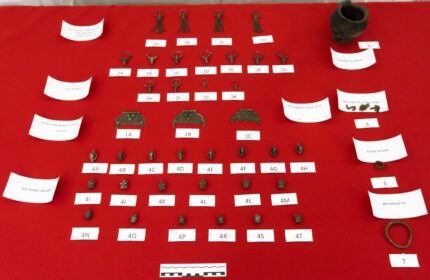
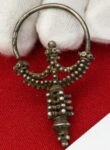

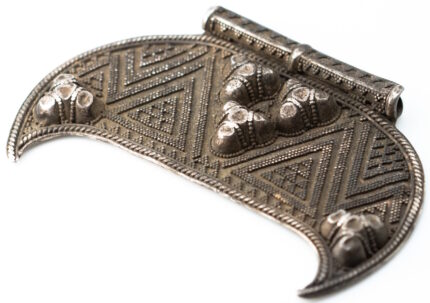
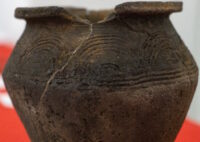
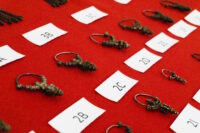








No comments:
Post a Comment